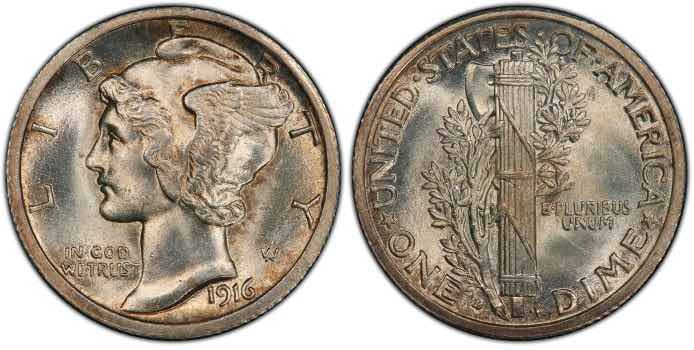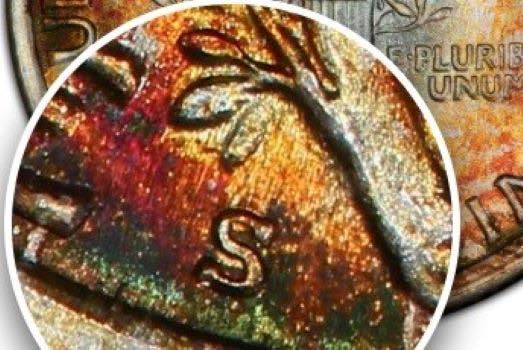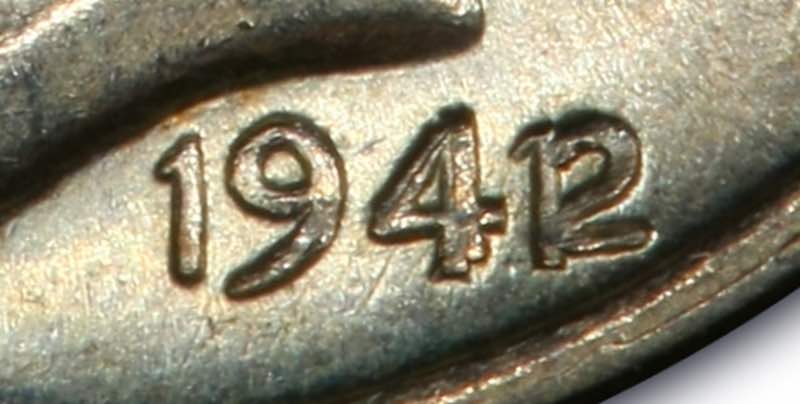Ed. note: This article is periodically updated to reflect the current price of most valuable coins.
In Coleccionistas de Monedas, we fight against the misinformation surrounding the world of coins on the Internet. For this reason, our articles are entirely written by people, not AI or other automated systems. Additionally, we link to all sources and references for coin prices, with the goal of providing you with real, updated, and reliable information.
How do we verify coin prices and values?
At Coleccionistas de Monedas, we are committed to providing accurate, trustworthy, and well-sourced numismatic information. We understand that articles about coin values can influence important financial decisions, which is why we apply a clear and rigorous methodology to estimate prices.
Sources used
- PCGS Price Guide: The official pricing guide from the Professional Coin Grading Service.
- NGC Price Guide: Updated valuation system from the Numismatic Guaranty Company.
- Heritage Auctions: Database of real auction sale prices.
- Red Book: Printed guidebook with historical pricing by grade.
- eBay Sold Listings: Only completed sales are considered, not asking prices.
Validation process
- Price review by condition grade using standard scales (MS, AU, XF, VF).
- Verification of varieties and errors through multiple data sources.
- Expert consultation when prices significantly deviate from the norm.
- Regular updates to reflect current market trends.
Important disclaimer
The values presented in this article are for reference purposes only. Final coin prices can vary significantly depending on authenticity, grade, and selling context. We strongly recommend having your coin certified by a professional service such as PCGS or NGC before selling or purchasing it as an investment.
As you will see in this article there are big price differences depending on the quality, year, and mint (place of manufacture) of each Mercury Dime. For this reason, we can buy some U.S. dimes in medium-high grades from around $10 or $20 to hundreds of thousands of dollars, as for example the incredible $240,132 for this Mercury Dime 1916-D MS64 FB specimen sold by Heritage Auctions in 2019 (reference). In silver content, each Mercury Dime is already worth $1.8 (silver value April 2021).
Mercury Dime Value
Coleccionistasdemonedas.com Estimated Value of Mercury Dime is:
Most Expensive Mercury Dime Chart
| Type of Mercury Dime | VF20 | XF40 | AU50 | MS63 | MS66 |
|---|---|---|---|---|---|
| 1916-D (Denver) | $3,900 | $5,600 | $8,000-8,150 | $15,000-16,500 | $39,000 |
| 1924-S (San Francisco) | $18 | $65 | $115-118 | $525-575 | $3,500-3,850 |
| 1936 (Philadelphia) | $5 | $6 | $7 | $19-21 | $60-65 |
| 1942-S (San Francisco) | $5 | $5 | $6 | $19-21 | $40-52 |
| 1919-D FB (Denver, Full Bands) | $- | $- | $- | $2,500-2,850 | $155,000 |
And you’ll see
- how to identify your most valuable Mercury Dime,
- which years are most valuable, and
- some price-boosting variants, such as the “FB” Mercury Dime.
And of course, you’ll learn more about this precious coin from U.S. History.
JUMP TO SECTION
How to identify a Mercury Dime?
The 10 cent Mercury coins have on the obverse, the bust of a woman representing Liberty. She wears a Phrygian cap with wings, reminiscent of the god Mercury, hence the name of the dime.
Surrounding this female bust we find the legend “LIBERTY”, which is precisely what the head represents. On the lower left side of this obverse, we find the motto “IN GOD WE TRUST” which is so common on U.S. coins. Just on the opposite side of the bust, the year of issue of the coin, under the anagram appears the name of the designer, Adolph Alexander Weinman.
On the reverse, we find right in the center some fasces, a Roman symbol that represents unity and strength, since it is made up of many rods joined together, which evokes that strength is born from this union. In addition, the fasces are surrounded by olive branches, symbolizing peace. Also in the center, to the right of the symbol appears the motto “E. PLURIBUS UNUM” (from many, one).
Surrounding the fasces are two legends in a semicircle. At the top is the name of the issuing country “UNITED. STATES. OF. AMERICA”, and at the bottom the denomination of the coin “ONE DIME”.
As for its characteristics, they are as follows:
- It weighs 2.5 grams.
- A diameter of 17.9 millimeters.
- It is made of 90% silver, and the remaining 10% is copper.
- There may be three possible mints:
- Philadelphia: No mintmark letter.
- Denver: It is marked by the letter “D” on the obverse.
- San Francisco: Marked by the letter “S” on the obverse.
The mintmark is located, if present, just to the right of the word “ONE” on the reverse.
Each mint has a different number of mintages, so they may be rarer. Typically Philadelphia is the most abundant Mercury Dime, and Denver the rarest, and therefore most valuable, especially in years like 1916.
A little history of the Mercury Dime: 1916-1945
The Mercury Dime began minting in 1916 and ended in 1945. Its predecessor was the Barber Dime (1892-1916), and the successor dimes are the same as today’s Roosevelt Dime, although since 1965 they no longer have silver content.
Both the Mercury Dime and the Walking Liberty half dollar were designed by sculptor Adolph Alexander Weinman, who, as in the case of the half dollar, had the idea of representing Liberty, this time winged in victory. In addition to its resemblance to Mercury, it is more appropriately called the “Winged Liberty Dime”.
During the Great Depression, they were discontinued (in 1932 and 1933). There are not many coins minted in Denver in its first year of issue, in 1916, because production was stopped to complete the minting of quarters, hence their high value.
In 2016, to commemorate the 100th anniversary of the first issue of the Mercury Dime, a gold version with the same design went on sale.
How do I know the quality of my Mercury Dime?
The higher the grade, the higher the price grows exponentially, as it is a factor of great importance. U.S. coins tend to be quite abundant in medium grades, so a slight difference in grade can make them extremely rare. A year with less mintage makes higher grades even rarer.
To know the state of conservation of the coin we own or want to buy we need to have an expert eye that we can hardly acquire without time or experience. That is why it is not a bad idea to resort to TPG (Third Party Grading Service). These are companies dedicated to evaluating and providing a score to our coins according to their condition. In addition, they certify the authenticity and encapsulate the coin for security purposes, both for its preservation and to facilitate its sale.
What is a Mercury Dime Full Bands (FB)?
Mercury Dimes are quite plentiful in general, however, there is one detail that can greatly increase their price.
On the reverse, as we have seen previously, the fasces can be appreciated and we see that there are some “bands” that tie the wooden rods. There are 3 series of bands, at the top, center, and bottom of the bundle of rods.
We have to look at this central one, since, in most Mercury Dimes, the central bands are “fused”, that is to say, it is not possible to distinguish that they are two separate bands joining the fasces in the center. In the case that the two are clearly differentiated, it is said that it is a Mercury Dime Full Band.
Of course, this detail is only noticeable in coins of high quality, because due to wear it is possible that, even if it had been a Full Band in its origin, the feature would be indistinguishable.
Top Mercury Dime most valuable
#1 Mercury Dime 1916-D Full Bands
This is the scarcest Mercury Dime due to the low mintage in Denver as we have seen in the history of this coin. A total of 264,000 coins were minted. In the case of Full Bands the rarity, and therefore value, is further increased.
Mercury Dime 1916-D Full Bands Value Chart
| Grade | Value |
| MS63 | $18,500-19,000 |
| MS64 | $25,000-28,500 |
| MS65 | $45,000-52,000 |
| MS67 | $155,000 |
#2 Mercury Dime 1919-D Full Bands
Again in Denver, in the year 1919, with a print run of 9,939,000, in case of having the Full Bands variant, its price is 9,939,000:
Mercury Dime 1919-D Full Bands Value Chart
| Grade | Value |
| MS63 | $2,500-2,850 |
| MS64 | $3,600-5,250 |
| MS65 | $37,500-55,000 |
| MS66 | $155,000 |
#3 Mercury Dime 1918-D Full Bands
In MS67 this is the most expensive Mercury Dime, of course in the Full Bands variant. Regardless of the variant, this is a Denver mintage coin with an output of 22,674,800. Quite plentiful compared to the previous one.
Mercury Dime 1918-D Full Bands Value Chart
| Grade | Value |
| MS63 | $2,500-2,650 |
| MS64 | $3,000-5,500 |
| MS65 | $13,500-22,500 |
| MS67 | $195,000 |
#4 Mercury Dime 1942/1 Full Bands
Although there are more expensive specimens, in 1942 there was an error in the Philadelphia mint (also in Denver), which consists of an overdate, that is, the “2” of 1942 was minted over the “1” of the coin of the previous year. This gives it a peculiar appearance as seen in the photograph. Its value in case it is also Full Bands is :
Mercury Dime 1942/1 Full Bands Value Chart
| Grade | Value |
| MS63 | $12,500-13,000 |
| MS64 | $14,500-20,000 |
| MS65 | $52,500-57,200 |
| MS66 | $85,000 |
#5 Mercury Dime 1920-S Full Bands
Both 1920 and 1921 and 1923 are quite scarce years, and even more so if they are Full Bands. In San Francisco, a total of 13,820,000 Mercury Dime were minted in 1920 and their value is as follows:
Mercury Dime 1920-S Full Bands Value Chart
| Grade | Value |
| MS63 | $1,100-1,350 |
| MS64 | $2,100-2,650 |
| MS65 | $4,500-5,00 |
| MS67 | $75,000-95,000 |
Conclusions
Collecting Mercury Dimes for years is relatively affordable for the average pocketbook if we do not demand extremely high grades. On the other hand, certain mints such as Denver can make us spend a lot of money if we want to complete year by year all the 10-cent coins.
A recommendation to build a good collection is to get accessible years and mints with good grading and avoid specimens that we cannot afford.
In addition, it is a coin that seems to be conserving its value very well and is even increasing in value over the years, so as an investment it is also wise to buy some extraordinary specimens.
References and sources
- Heritage Auctions
- NGC Coins
- The Official Red book 2025: A Guide Book of United States Coins.





